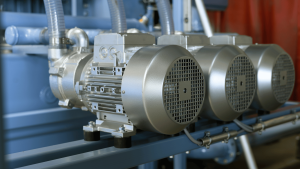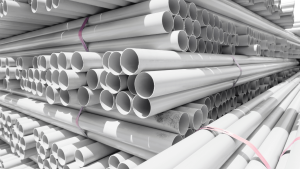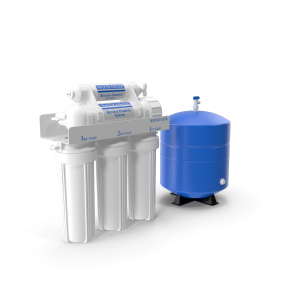What is carbon water filter ?
A carbon water filter is a filtration system that uses a specially treated form of carbon, known as activated carbon or activated charcoal, to remove contaminants and impurities from water. Activated carbon works primarily through the process of adsorption, where contaminant molecules in the water are trapped inside the pore structure of the carbon substrate.

How Carbon Water Filter Work:
- Adsorption: As water passes through the carbon filter, contaminants are removed through adsorption. The contaminants adhere to the surface of the activated carbon particles.
- Chemical Process: The effectiveness of activated carbon is due to its high surface area and the chemical nature of the carbon. This high surface area provides ample binding sites for chemicals, organic compounds, and certain heavy metals to adhere to, without being absorbed into the carbon itself.
Contaminants Removed by Carbon Filter:
- Chemical impurities: Including chlorine, pesticides, herbicides, and other volatile organic compounds (VOCs).
- Odors and tastes: Such as those arising from chemical treatments in municipal water supplies.
- Certain heavy metals: Like lead, although the efficacy can vary depending on the specific filter design and material.
Common Uses:

- Drinking water purification: To improve taste and safety by reducing chemical contaminants and particulate matter.
- Point-of-use systems: Such as under-sink or countertop filters to provide clean cooking and drinking water.
- Whole-house systems: These are installed at the point where water enters the home to treat all the water distributed throughout the house.
Limitations of carbon water filter :
While carbon water filters are highly effective at removing a wide range of contaminants, they are not effective against all types of impurities. For example, they do not remove minerals and salts (like dissolved inorganic ions) and are not designed to tackle microbiological contaminants unless combined with another filtration technology, such as UV or microfiltration.
Overall, carbon water filters are a popular and effective choice for improving the quality of drinking water due to their ability to remove many common contaminants, ease of use, and cost-effectiveness.
Overview of Water Purification
Water purification is a critical process intended to make water safe for human consumption and use. The primary goal of water purification is to remove contaminants, pathogens, and other undesirable components from raw water sources. Methods of water purification vary widely, ranging from simple physical barriers like sand filters to complex chemical and biological processes. Each method targets specific types of impurities and has its own advantages and disadvantages depending on the water source and the desired quality of the water.
Modern water purification techniques include coagulation and flocculation, sedimentation, filtration, and disinfection. Filtration, in particular, is one of the most effective ways to remove particles and impurities. Among filtration technologies, activated carbon filters have emerged as a highly efficient tool not just for removing particles, but also for adsorbing gases, chemicals, and odors.
Importance of Clean Water and the Role of Activated Carbon Filter
Clean water is essential for a wide array of activities ranging from drinking and cooking to irrigation and industrial processes. The purity of water affects not only the health of populations but also the economic efficiency of industries and the ecological balance of environments. Activated carbon filters play a vital role in achieving this purity by providing an accessible and effective method to remove organic compounds and chlorine, which are common in municipal water sources. They are particularly valued for their ability to improve taste and remove odors, making them indispensable in both household and industrial settings.
What is Activated Carbon?

Definition and Production of Activated Carbon
Activated carbon, also known as activated charcoal, is a form of carbon that has been processed to increase its surface area through the creation of small pores. These pores enhance the carbon’s ability to adsorb contaminants, a process by which particles adhere to a surface rather than being absorbed into it. The production of activated carbon involves heating organic materials such as wood, coal, or coconut shells to extremely high temperatures in an environment devoid of oxygen. This process, known as pyrolysis, leaves behind a highly porous carbon matrix.
Once the carbonaceous material has been carbonized, it undergoes an activation process. This typically involves treating the material with oxidizing gases like steam or carbon dioxide at high temperatures. This activation process further develops the pore structure and increases the surface area, which can be as vast as 3000 square meters per gram, making activated carbon an exceptionally potent adsorbent.
Types of Activated Carbon Used in Filtration
Activated carbon comes in several forms, each suited to different filtration tasks:
- Granular Activated Carbon (GAC): Consisting of relatively larger carbon particles, GAC is commonly used in water purification systems for homes and municipalities. It is effective in removing odors, colors, and taste-affecting compounds from water.
- Powdered Activated Carbon (PAC): With its fine particles, PAC is often used in treatment facilities where rapid reaction times are needed. It is particularly effective for treating large volumes of water with varying contamination levels quickly.
- Block Activated Carbon (BAC): This form of carbon is made by grinding activated carbon and then binding it into a solid block shape. It combines a large surface area with physical filtration capabilities, making it effective at removing chemical pollutants as well as particulates.
- Impregnated Carbon: This is carbon that has been enhanced with additional absorbing materials or chemicals to target specific contaminants, such as heavy metals or ammonia. It is used in specialized environments where specific chemical removal is necessary.
Activated carbon filters are an essential component of modern water purification systems, adept at addressing chemical, physical, and aesthetic concerns in water treatment. Their ability to handle a wide range of contaminants makes them invaluable in ensuring the delivery of clean, safe water in both residential and commercial contexts.





 Automation System
Automation System  Energy Engineeing
Energy Engineeing  Instrumentation System
Instrumentation System  Mechanical Engineeing
Mechanical Engineeing  Piping Technologies
Piping Technologies  Transportations
Transportations  Manufacturing
Manufacturing  Training Material
Training Material 







